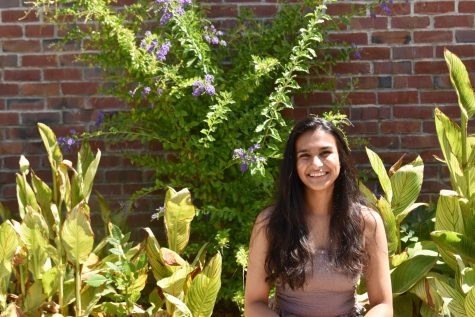The contrast in my sports
How I turned my weakness from one sport into a strength in the other
November 24, 2019
I walked onto the stage, my ankles heavy with brass bells. I could feel my heart ready to explode from stage fright, even though I had practiced my routine a million times. The music started and I robotically performed the choreography with an emotionless smile plastered on my face.
“You did such a good job,” my mom said.
This simple praise built me up — I was a happy eight year old eating a snack after a seven minute long dance performance. I’m practically a ballerina, I thought to myself.
And then I saw the video of my performance.
I watched it over and over again, tears filling my eyes faster every time. It was horrible; I had no agility, no grace and I definitely did not look like a ballerina. There was nothing to be proud of.
I continued to dance for four more years, mindlessly learning choreography. Technically, I was good — I knew the steps and I was the best spinner in the class. But, I didn’t have the grace to be the best performer.
In fourth grade, I started playing soccer in addition to dance. I played recreationally in American Youth Soccer Organization (AYSO) and essentially ran around the field for two hours, four times a week. Because I was a fast runner, I was the best on the team and I assumed I was a good soccer player.
In eighth grade I tried out for a competitive club team where I was the worst on the team. My shining picture of being the best was destroyed. I was so weak. I didn’t tackle, I wasn’t aggressive and if someone was running at me I would let them take the ball from me. I was too much of a wimp to succeed at this sport.
As I continued going to soccer practice, I often heard, “Where’s your mind at?” or, “You need to focus.” After almost a year of listening to this, I actually started to take the advice. I started to hold my ground in games — I started to tackle the ball, defend, and I legitimately got better. I started playing wing back, and sprinting up and down that field became one of my favorite things to do over the weekend.
Outside of soccer, I was still going to dance and I would hear, “Think of a happy moment,” or, “How would someone feel if their loved one had died?” in order to have more genuine performances. Emotions were hard for me to project; I didn’t know how to connect a memory to a facial expression. As a high schooler who had been dancing for 11 years, I felt like I needed to get this down. What were people going to say when they saw a 14-year-old dancing like a six-year-old?
I started off with the easiest emotion: happiness. My dance teacher talked me through what the song meant, why the character was happy and, surprisingly, I got it. I finally understood what it meant to be an emotional dancer.
The two contrasting sports came together as one. It was all a mind game, I had to focus and put my weakness from each sport into the other in order to improve both of them. I wasn’t a graceful dancer, I was too aggressive. I wasn’t a strong player, I was too dainty. I just had to find a way to take parts of both of them. Although it took me a long time to get these things down, it really changed how I felt about both activities. Soccer wasn’t dreadful anymore and dance class didn’t cause my stomach to whirl.
Though I don’t play soccer anymore, I’m dancing more than I ever have. I’m not the prettiest or skinniest girl in my group, but being emotional and graceful while dancing has given me an elegance that I would have never found without the obstacles I’ve overcome.



























